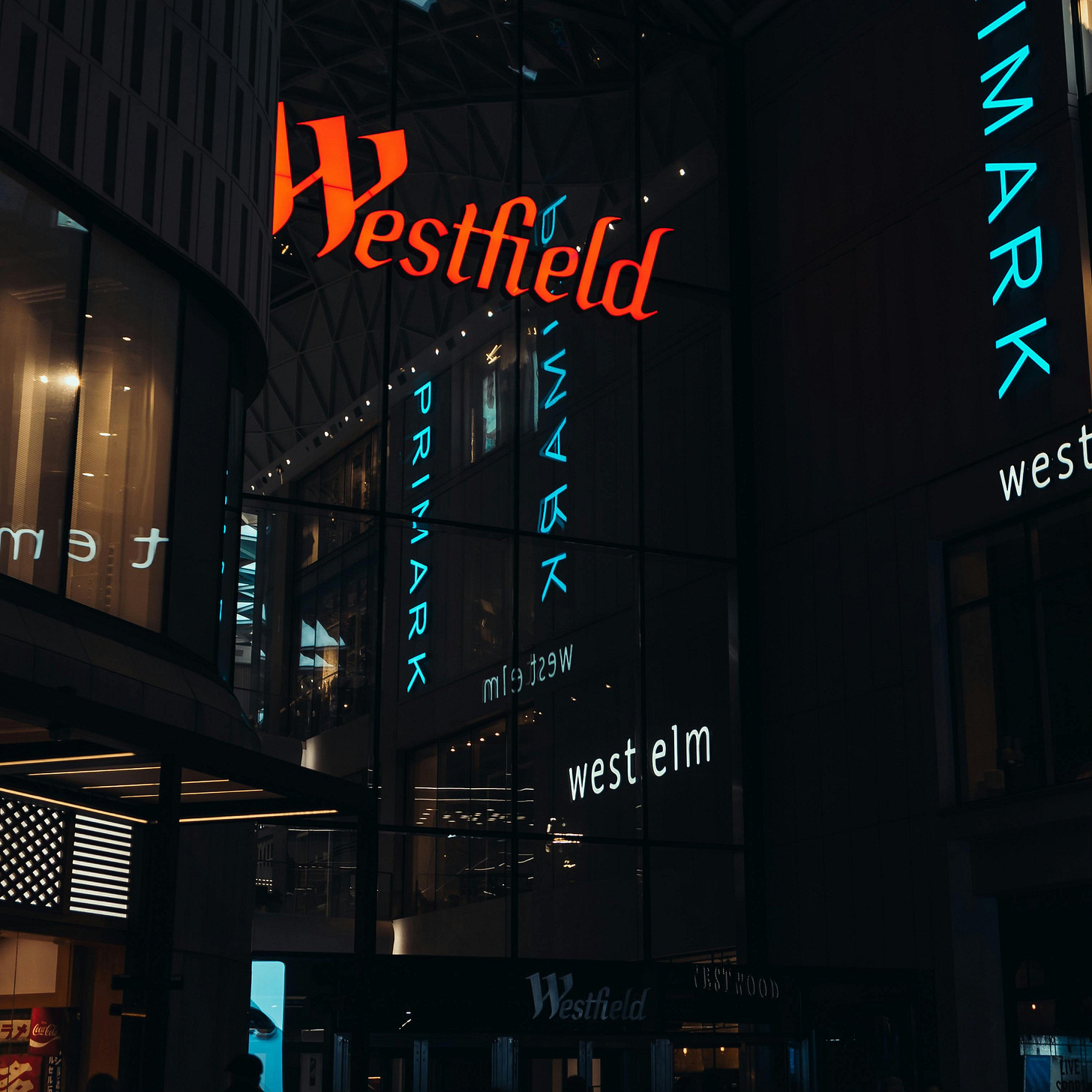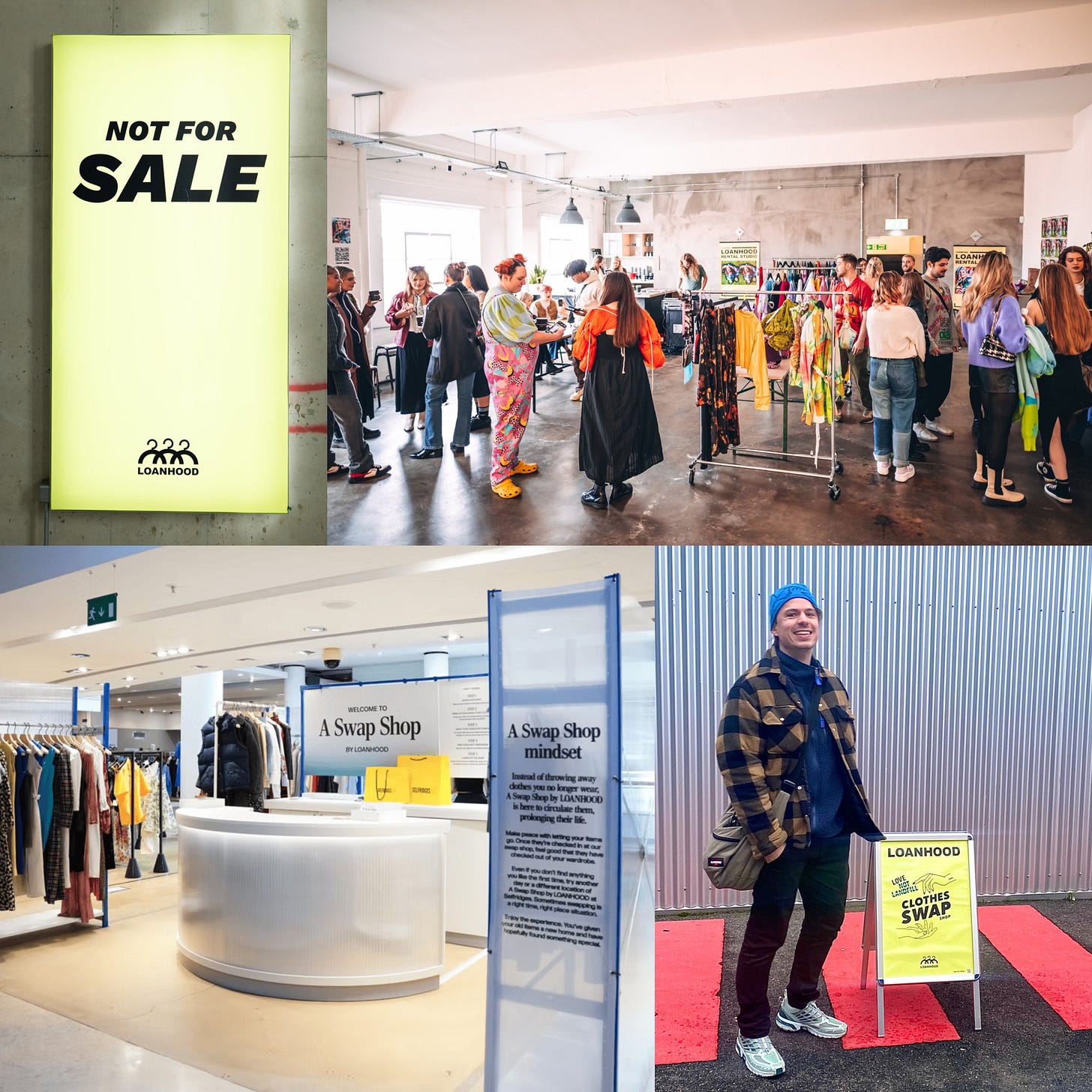Clothing swaps: the future of fashion consumption?
No-buy years and swap shops.
Welcome to Mutant Futures: a newsletter about culture, futurism and strategy.
In this edition, I’m discussing clothing swaps as a model for the future of fashion consumption.
Let’s get into it 🔬
If you’re even remotely tuned in to Gen Z and TikTok, you’ve probably noticed No-Buy 2025 making its way into the ‘new year, new me’ conversation. The trend aligns with a wider shift against overconsumption on the platform, gaining traction in 2023 with #deinfluencing and related trends like ‘underconsumption core’ and ‘loud budgeting’ from last year.
While the intentions are good, these trends also reveal the cycle of impulsive spending and guilt-ridden fasting many of us are caught in. Although these resolutions may hold for a bit, what happens once you’ve saved up some money and temptations are high? Without a deeper mindset shift, you risk falling back into old habits. Much like the trap of ‘lifestyle creep’, where your pay rise gets swallowed by bigger, more lavish purchases.

I watched various examples of people’s no-buy manifestos on TikTok, with ‘no new this’ and ‘no new that’. ‘New clothing’ was almost always mentioned in these videos as a no-no category, understandably. What could’ve made these resolutions more robust, I think, was ideas on how to address temptation. How to scratch that dopamine itch. Or else you’d have to face the no-buy blues, and that sounds jarring.
Swapping is underrated
Enter swapping—since you’re not spending money, you’re not jeopardising your no-buy commitment. But you still have an outlet to explore new clothing.
Financial savings aside, what got me curious about clothing swaps was their environmental appeal. Charity shops and second-hand platforms inject more sustainability into fashion by extending garment lifespans. And that’s great, but they’re not spotless solutions. The majority of charity shop donations don’t get sold. They’ll get moved around, shipped to places like Ghana and might end up in landfill. And resale platforms still create emissions associated with transport. They also contribute to overconsumption more generally.
So could swapping our clothes satisfy our need to express ourselves through new stuff, without encouraging industrial production of more stuff? After all, most of us can agree that the world has a stuff problem.
The idea to write about circular fashion and swapping first came to me after researching solarpunk for my previous post. To recap, solarpunk is a sci-fi sub-genre with a sunny outloook on the future. It imagines a society that prioritises community, circularity and eco-stewardship.
Here’s a lil clip painting that picture:1
While there’s no blueprint on this, the vibe on Reddit is that solarpunk fashion consumption would involve a circular system. Clothes would be upcycled or repurposed and circulation would be localised. Swapping would no doubt be a part of that system.
The idea of a community-based shared wardrobe fascinates me. Imagine a future where we’ve unlocked our wardrobes to others and:
Everyone gets to wear something new, while sharing what we already own.
The Sheins and Zaras of this world have been toppled through a circular rebellion.
We’ve stopped the landfill floods.
And of course, our wallets are no longer in a fin-dom relationship with mega corporations.
What would it take to get us there? I wanted to look at the clothing swaps we have today as a case study, and strategise from there.
Experiencing a swap shop first-hand
As field research for this post, I headed to a swap event earlier this month. Organised by Loanhood, it was a free event held in an industrial unit in Hackney, East London.
I turned up with two items, which were eyeballed by Loanhood’s volunteers for approximate resale value. I then got a number of tokens to spend on items I saw on the hangers. And off I went, sifting through them. The clothing rails weren’t labelled or categorised, so there was quite a bit of sifting involved.
Going in with few expectations, I wasn’t surprised to find mainly women’s clothing in the room, and women perusing it of course. I did see a few males though, and presume that more showed up that day. But men’s clothing was few and far between. I can’t say I was blown away by the quality of clothing overall, and suspect that most of it would struggle to sell on a second-hand platform. To be fair, I brought my items for the same reason.
Having arrived quite late to the event, I probably missed out on anything for keeps. To get the full experience and actually spend my tokens, I’ll need to repeat the experiment another time. That said, it was a fascinating look into a movement that deserves more exposure.
From niche to mass appeal: making swaps scalable
Clothing swaps are obviously not a new thing, but in the last few years there’s been a wave of initiatives in London and other major cities aiming to modernise them. But scaling them comes with a number of considerations. Let’s get into that for this final section.
Addressing the challenges 🔧
Clothing swaps face multiple challenges standing in the way of their full potential. Firstly, costs are a sticking point. Swap organisers often rely on sponsorships or local government funding, since they’re essentially running a business with no income. Another challenge is how to broaden the offering of clothing, which normally leans towards women’s clothing in limited sizes. Then there’s the issue of quality—actually finding something worthy of keeping, that matches the value of what you brought. How the space is organised is also important. Simply putting some railings in a room won’t create much ambience. And last but not least, the social stigma associated with clothing swaps—that it’s for people of low social class who can’t get new clothing by other means.
For more financial viability, swap organisers could try pooling funding from local councils or brands together with a donation-based entry system. On the aspect of diversity—let’s say it’s not realistic to do a swap dedicated to one demographic e.g. plus-sized people—you could at least divide the railings up into different sizes and/or genders. Even if people go home empty-handed, more thoughtful representation could lead to more diverse attendance at future events.
The quality control aspect is tricky. As I said above, if an item can be sold on Vinted for example, it may not make it to the swap. Perhaps this could be addressed by introducing a quality tier system. So if you bring a fast fashion item for example, you can only claim another fast fashion item. As well as encouraging people to bring higher quality items, this may lead to more fairness with what people can take home. Adding more visual appeal to the venue with signs, extra lighting or other decorative tweaks could make swaps more inviting. And as for the social stigma, more on that below.
Opportunities 🔑
Several clothes-swapping apps have emerged in recent years, highlighting tech’s role in growing the movement. These are helping to streamline the swapping process, allowing users to track and exchange items more efficiently. For example, London-based Closwap uses a Tinder-like swiping UI for their app.
Swap-based brand activations offer enormous potential to boost the mainstream appeal of swapping and dissolve its social stigma. Brands like Lululemon have already tested the waters with their ‘Dupe Swap’ event at LA’s Century City Mall in 2023, where customers could exchange knock-off leggings for authentic ones:
Another key opportunity lies in transforming clothing swaps into cultural events with a focus on community. By partnering with something like an arts festival or craft fair2, the experience of swapping can be transformed from a transactional one to something more, creating a richer experience for everyone involved.
There’s soooo much to be said about this space and I’m only scratching the surface here. It’s a rabbit hole. I will definitely follow up this post with a deeper dive in the future.
In the meantime, I encourage you to look up clothing swap events near you and check one out for yourself. While it can be a gamble, that’s also part of the fun!
If you read to the end of this post, you’re a real one! 💜 If you haven’t subbed already…
An extract from Chobani’s ‘Dear Alice’ 2021 advert—an animated short with a Studio Ghibli feel set in a solarpunk world. As beautiful as this looks, the solarpunk fan community were not happy that this was an ad for an American yoghurt brand, since the movement has an anti-capitalist ideology. This clip was taken from the ‘decommodified’ version, which has removed any trace of the Chobani branding and voice-over.
To name one example, I stumbled upon LA-based Radical Clothes Swap, who seem to really champion this approach.





Hi Philip, really loved this article and wanted to let my thoughts marinate on this as I’ll admit swapping is probably one of the circular business models I typically overlook. Most likely this is due to some of the issues you mention regarding how to make it profitable for fashion businesses and organisations to invest in. The idea of a ‘community-based wardrobe’ is intriguing to think about although as you point out; issues with quality, size availability and diversity are difficult to contend with. Limited style diversity in particular is something I’ve personally struggled with, often finding there’s not a lot that I’d actually want to wear - a massive hinderance if trying to avoid buying new.
You mention the idea of ‘scaling’ which is of course beneficial for encouraging that mass appeal and accessibility. But for the challenges mentioned, I’m almost inclined to ask if we should be taking the opposite approach? Not bigger/shinier operations but hyperlocal/subculture/community-based activations that feel more personal and self-directed.
I’d much rather swap clothes with my friends, family, colleagues, my communities etc - people I know share similar styles and tastes to me. Reminds me of a project proposal I worked on last year for a wardrobe app: suggesting a feature to allow users to ‘raid’ their friends’ digital wardrobes and arrange swaps that way.
Offline I could see a subculture approach working well in a streetwear/luxury capacity (rare sneaker trades, vintage finds etc) but also allowing different communities and subcultures to pool their items and host their own ‘swap stands’ within a larger event where they might pay to have a stand or the event may have ticketed entry etc.
Also very curious to try the Closwap app you mentioned as I’d be curious to see how often different items get matches. This has turned out to be a very long comment (apologies) but this post was really insightful and has definitely made me reconsider swapping in a new light!